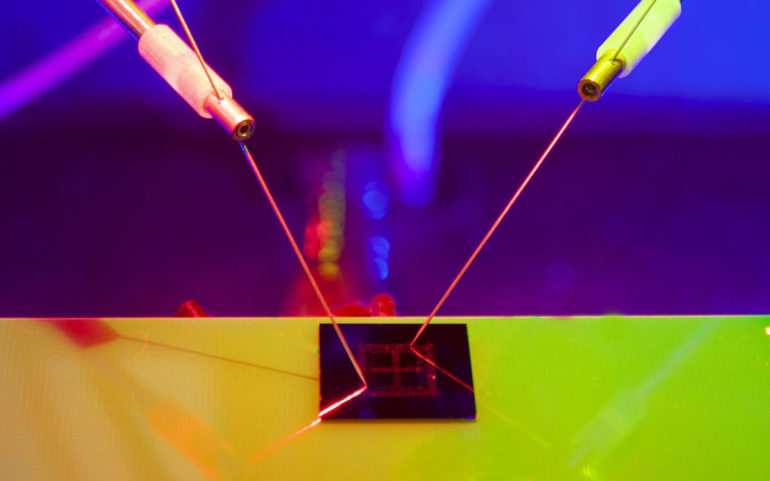RMIT University researchers have developed a light-powered electronic chip featuring artificial intelligence (AI) that has the potential to be used to power technologies such as drones, robotics, smart wearables, and bionic implants like artificial retinas.
Typically, AI relies heavily on software and off-site data processing, but according to lead researcher and RMIT associate professor Sumeet Walia, the prototype has been designed to combine image-capturing hardware and AI together to deliver brain-like functionality onto a single nanoscale platform.
“It’s getting us closer to an all-in-one AI device inspired by nature’s greatest computing innovation — the human brain,” said Walia, who also co-leads the RMIT functional materials and microsystems research group.
“Our aim is to replicate a core feature of how the brain learns, through imprinting vision as memory. The prototype we’ve developed is a major leap forward towards neurorobotics, better technologies for human-machine interaction and scalable bionic systems.”
Read also: Genevieve Bell and what the future of AI might look like
RMIT said the design of the prototype was inspired by optogenetics, a biotechnology tool that allows scientists to use light to manipulate neurons in the human body.
The AI chip itself has been created using ultra-thin black phosphorous material, which changes electrical resistance based on different wavelengths of light. RMIT said the study showed that by shining different colours of light on the chip, different functionalities such as imaging or memory storage can be achieved.
RMIT study lead author Taimur Ahmed said the decision to use light-based computing was because it was faster and required far less energy than existing technologies.
“By packing so much core functionality into one compact nanoscale device, we can broaden the horizons for machine learning and AI to be integrated into smaller applications,” he said.
“Using our chip with artificial retinas, for example, would enable scientists to miniaturise that emerging technology and improve accuracy of the bionic eye.”
The technology builds on an earlier prototype chip from the RMIT team, which used light to create and modify memories.



